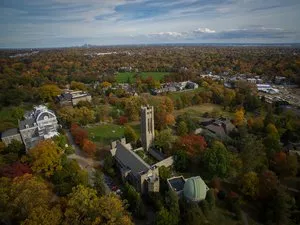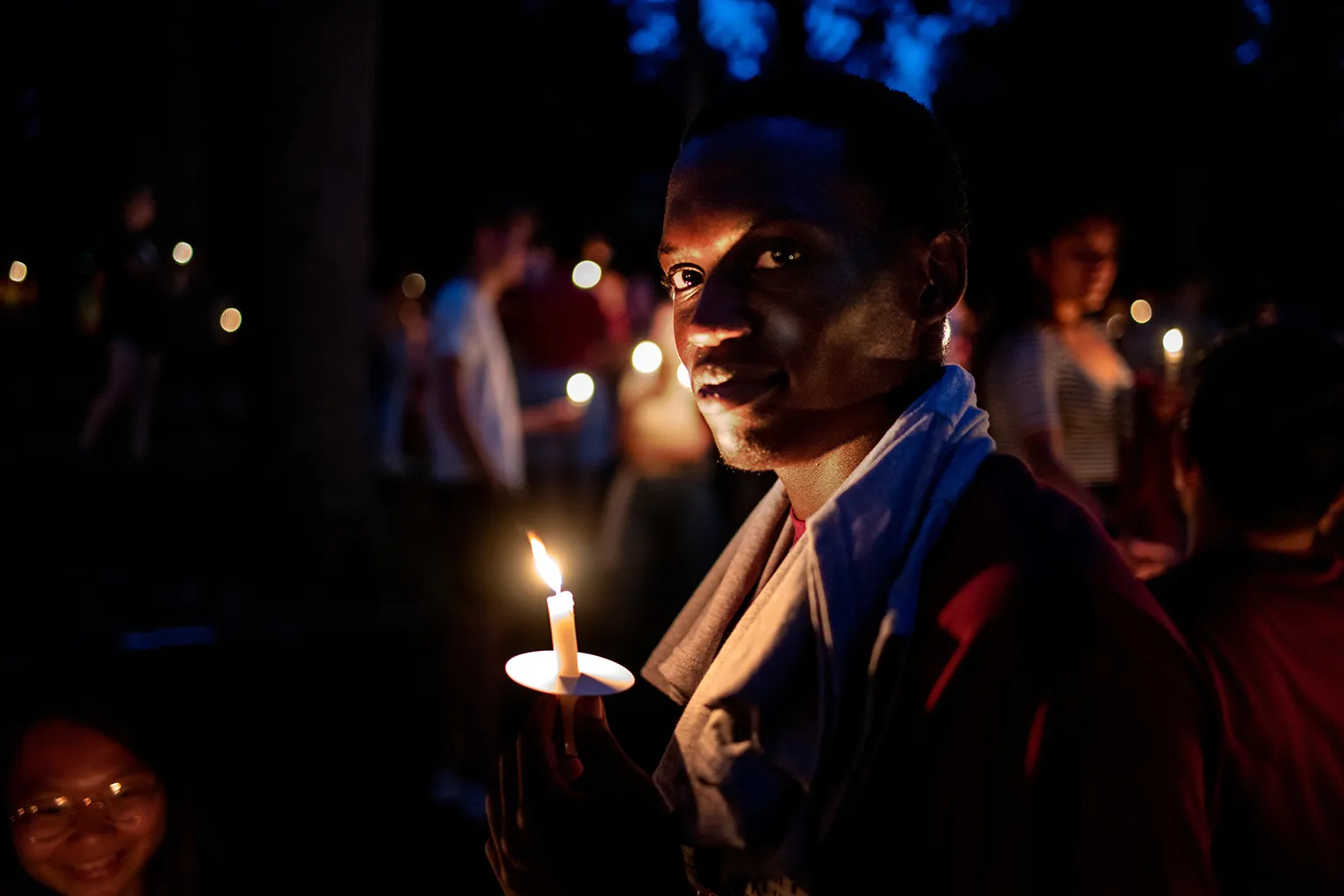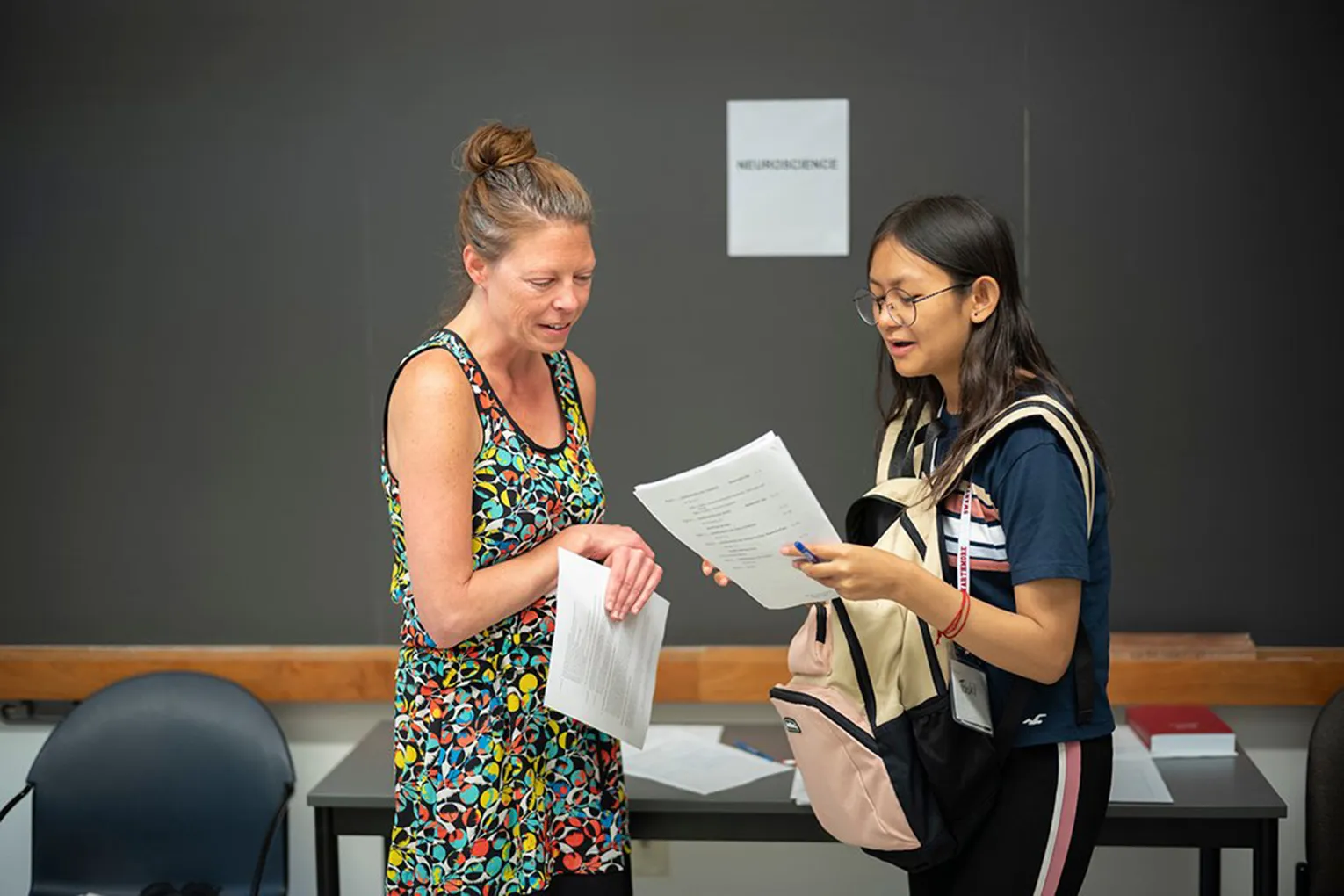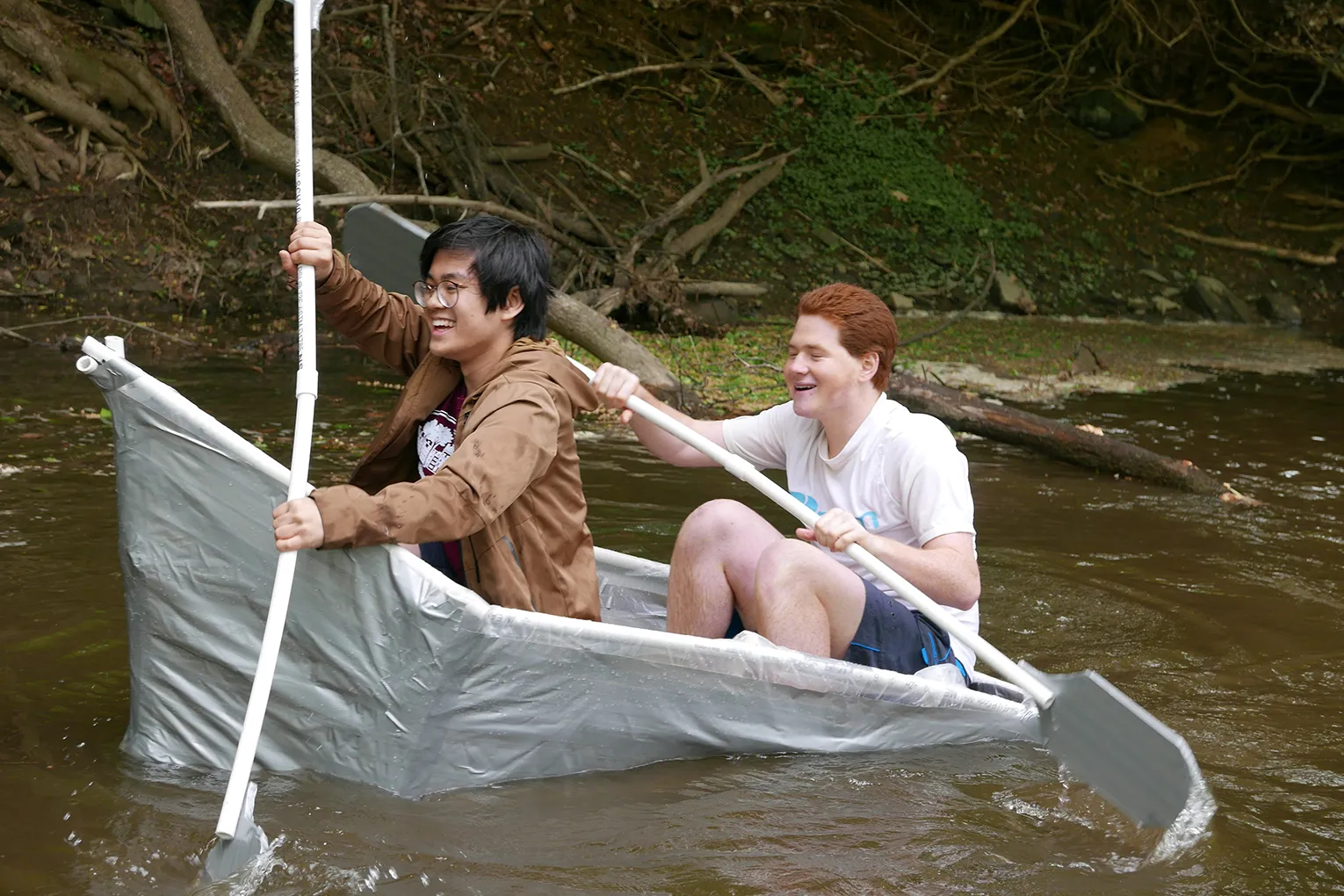Swarthmore Co-Hosts Long-Standing Liberal Arts Macroeconomics Conference
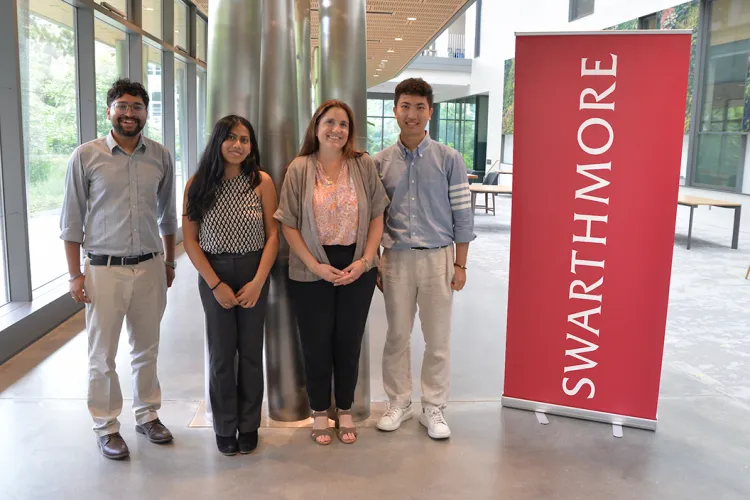
From left: Aashish Panta ’26, Pallavi Datta ’27, Associate Professor of Economics Maria Pia Olivero, and Frankie Li ’26.
The Department of Economics recently welcomed 65 professors from liberal arts colleges across the country for the Liberal Arts Macroeconomics Conference (LAMC), held August 7-8. Now in its 20th year, the annual gathering fosters a supportive research community for economists working in liberal arts settings.
For the first time, the two-day event was co-hosted by Swarthmore and Haverford College, with support from both departments and the Constance Hungerford Faculty Support Fund of the Provost’s Office.
The program featured 35 research presentations, four teaching workshops, a session on navigating tenure led by Franklin and Betty Barr Professor of Economics Amanda Bayer, and a keynote address by Satyajit Chatterjee, vice president of the Federal Reserve Bank of Philadelphia.
“The distinctive feature of the LAMC is its combination of state-of-the-art research with a very real ethos of support and collaboration” says Steve O’Connell, the Gil and Frank Mustin Professor of Economics. “Economics is a highly competitive discipline at the research frontier, and the atmosphere at most conferences is not as relaxed as LAMC.”
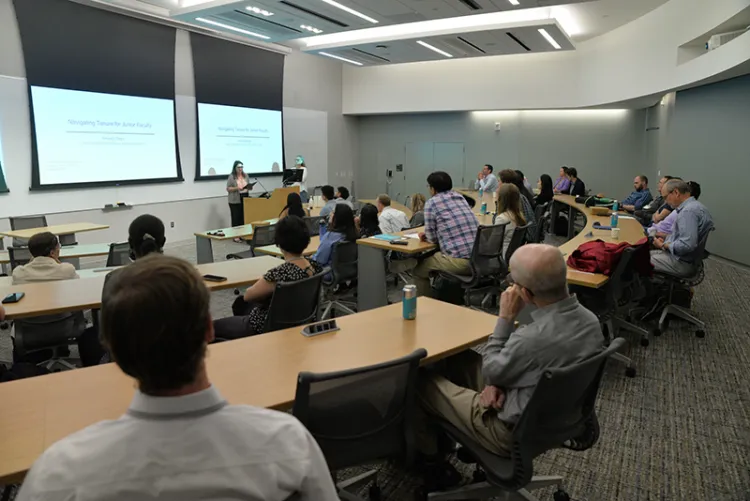
The program featured 35 research presentations, four teaching workshops, and a keynote address.
Maria Pia Olivero, associate professor of economics and co-organizer, notes that LAMC has been hosted annually since 2005 at liberal arts colleges across the country, including Claremont McKenna, Pomona, Richmond, Wesleyan, and Williams.
“What makes the liberal arts conference for macroeconomists special is its combination of rigorous macro research, a highly interactive format, and a collegial liberal arts ethos — a unique blend that creates both scholarly and personal connections,” she says.
The conference emphasizes community building among economists who often teach across the curriculum and in interdisciplinary programs. “Because of that, participants bring a wider perspective into their macro research,” Olivero explains. “We were able to reflect not just on frontier macroeconomic modeling and empirical work, but also on connections to the policy world and pedagogy.” Two-thirds of attendees were junior faculty, underscoring the conference’s commitment to emerging scholars.
Teaching-focused workshops are a hallmark of LAMC, giving younger faculty the chance to learn directly from senior colleagues. This year’s sessions explored deploying AI resources in the classroom and using the online platform Perusall to enhance student engagement in reading-intensive courses.
A highlight was Bayer’s interactive session, “Navigating Tenure for Junior Faculty.” Only the second liberal arts professor ever to serve on the American Economic Association’s Executive Committee, Bayer offered guidance to tenure-track faculty from more than 30 colleges on professional conduct, inclusive teaching, and career advancement.
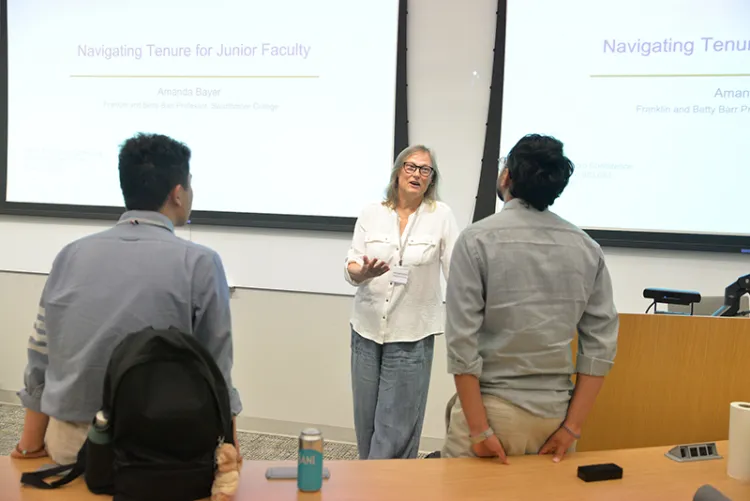
A highlight was Amanda Bayer’s interactive session, “Navigating Tenure for Junior Faculty.”
The conference also celebrated alumni accomplishments: the prize for best paper, selected by participant vote, went to Swarthmore alum Josh Abel ’11, now at Holy Cross College.
“This group is large enough that despite the wide range of topics addressed, there were always multiple participants whose own work overlapped with that of the presenter,” O’Connell reflects. “The quality of feedback was excellent.”
